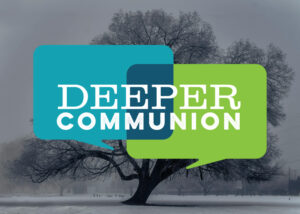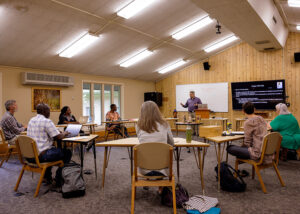Last summer, the Mennonite Heritage Centre was given a German language database of more than 110,000 family registries. We were ecstatic! With this new resource, we could reconnect families torn apart during the Second World War. The “lost” had been found. A branch from our faith family tree could be grafted back on.
Just like museums and other “memory institutes,” the Heritage Centre is charged with keeping stories and records of the past—like this database—alive. But we do more than that. Our vast collection links us to the faith stories of people who are no longer living and helps individuals and families reconnect.
It is a responsibility curators and archivists do not take lightly.
Reflecting on faithfulness through the pages of history is an important aspect of Christian faith. Repeatedly, God and the prophets implore the people of Israel to remember what God has done. Jesus breaks bread with his disciples and says, “Do this in remembrance of me” (Luke: 22-19). Weekly church services engage in the act of remembering as we worship and share a wide array of stories from the Bible, from our collective past and even from present day experiences, events that will eventually become stories of our collective past.
As Christians, a collective memory is vital to our participation in God’s ministry. It reminds us that adversity can strengthen, rather than deplete, faith. It reveals God in our midst through the ages and bolsters courage for faithful living.
Within the Heritage Centre’s walls, we carefully store sermons, stories, music, photographs, immigration papers, diaries and art, so that future generations can examine stories of the past with greater clarity.
Time and circumstances are changing in ways that only the Spirit knows. In days gone by, the Heritage Centre focussed on quietly performing a service for the larger church by collecting and preserving items reflecting Mennonite church history and Mennonite genealogy. As our holdings grow, their value rises and so does the need to share them more broadly and in more easily accessible forms.
We are rising to that challenge with increased electronic resourcing. A wide array of materials are available through a revamped archives webpage at http://archives.mennonitechurch.ca/. A blog is scheduled to arrive there soon. In just one year, we’ve made more than 16,000 images available electronically through the Mennonite Archival Image Database (MAID) at http://archives.mhsc.ca/, a project we launched with our now eight Mennonite partners. Our gallery displays art exhibits that connect the ethnic past of our Mennonite family with its multi-ethnic present and future. Photos from those exhibits are also available online at http://gallery.mennonitechurch.ca/.
The physical holdings, permanent displays, travelling art exhibits and online digital collections of the Heritage Centre are impressive, but the greatest gifts it has to offer are the faith stories these collections tell, and the ability to connect and reconnect members of our Mennonite family.
Korey Dyck is the director of the Mennonite Heritage Centre Archives and Gallery in Winnipeg.







Leave a Reply
You must be logged in to post a comment.